Lake of the Torches
Back in Flambeau for a week or so.
Photo by Katy
Photo by Sue
Back in Flambeau for a week or so.
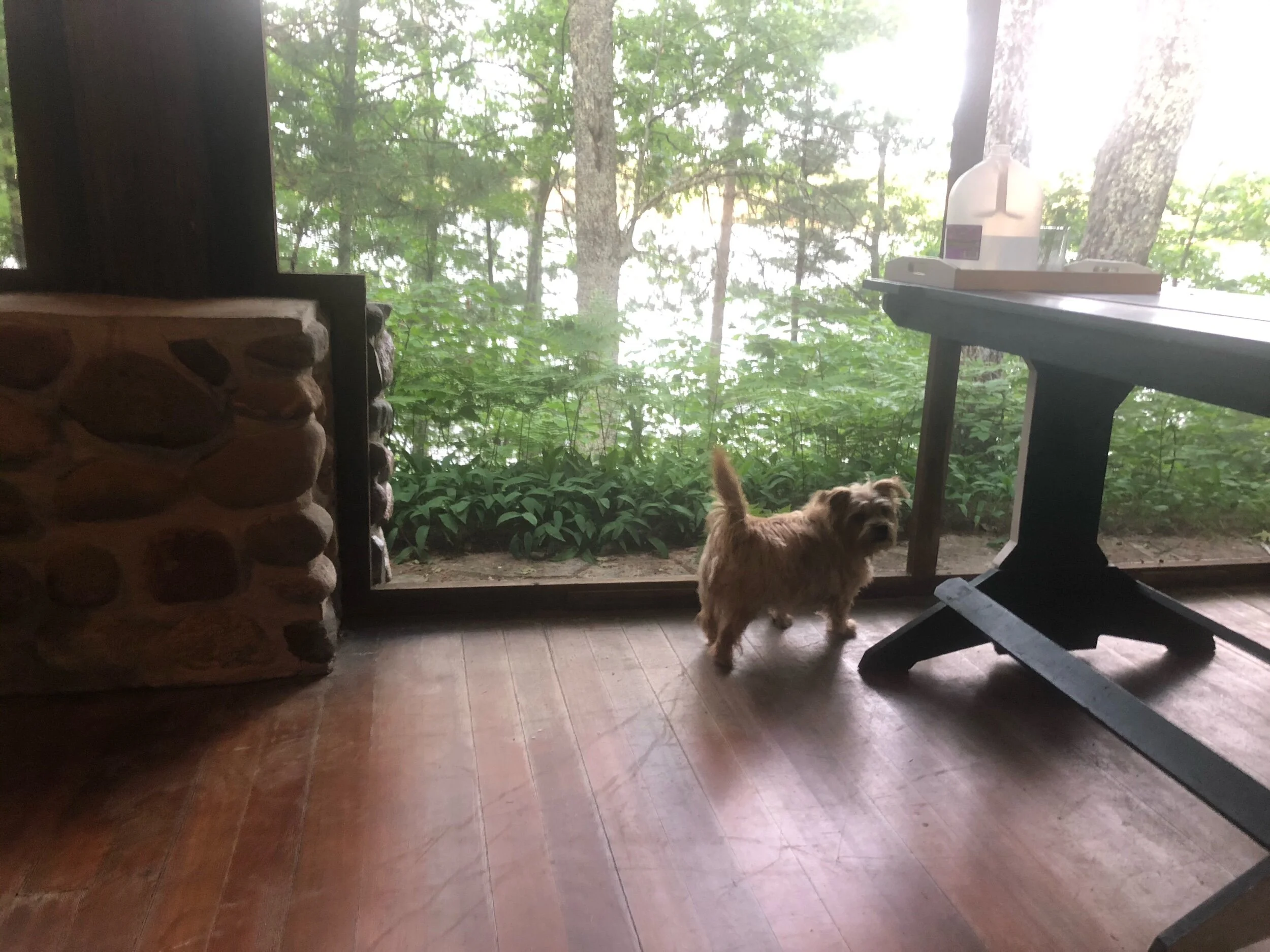

Photo by Katy

Photo by Sue
On our walks today, Pax and I zigzagged from tree to tree, finding the shade more comfortable than direct sun, of which there was an abundance.

Meanwhile, an op-ed to local papers, such as they are, HERE.

Interesting and informative book about Wisconsin’s old growth forests (or what’s left of them). Did you know that white pines sometimes live 500 years, hemlocks 600 years, and white cedars 1,200 years?
“An appreciation of old-growth…requires a sea-change, a new vision, from seeing the world through an agricultural model to understanding it within an ecological model. The clean cornrow has no analogous relationship to the natural world, nor does the urban park with Kentucky blue grass and scattered tall trees inscribed with hearts and initials. Forest ecosystems can’t be assembled and disassembled like a Lego set, nor be treated like a garden row of carrots to be thinned and weeded.”
Morning bike ride, afternoon dentist. And that was enough for one day.
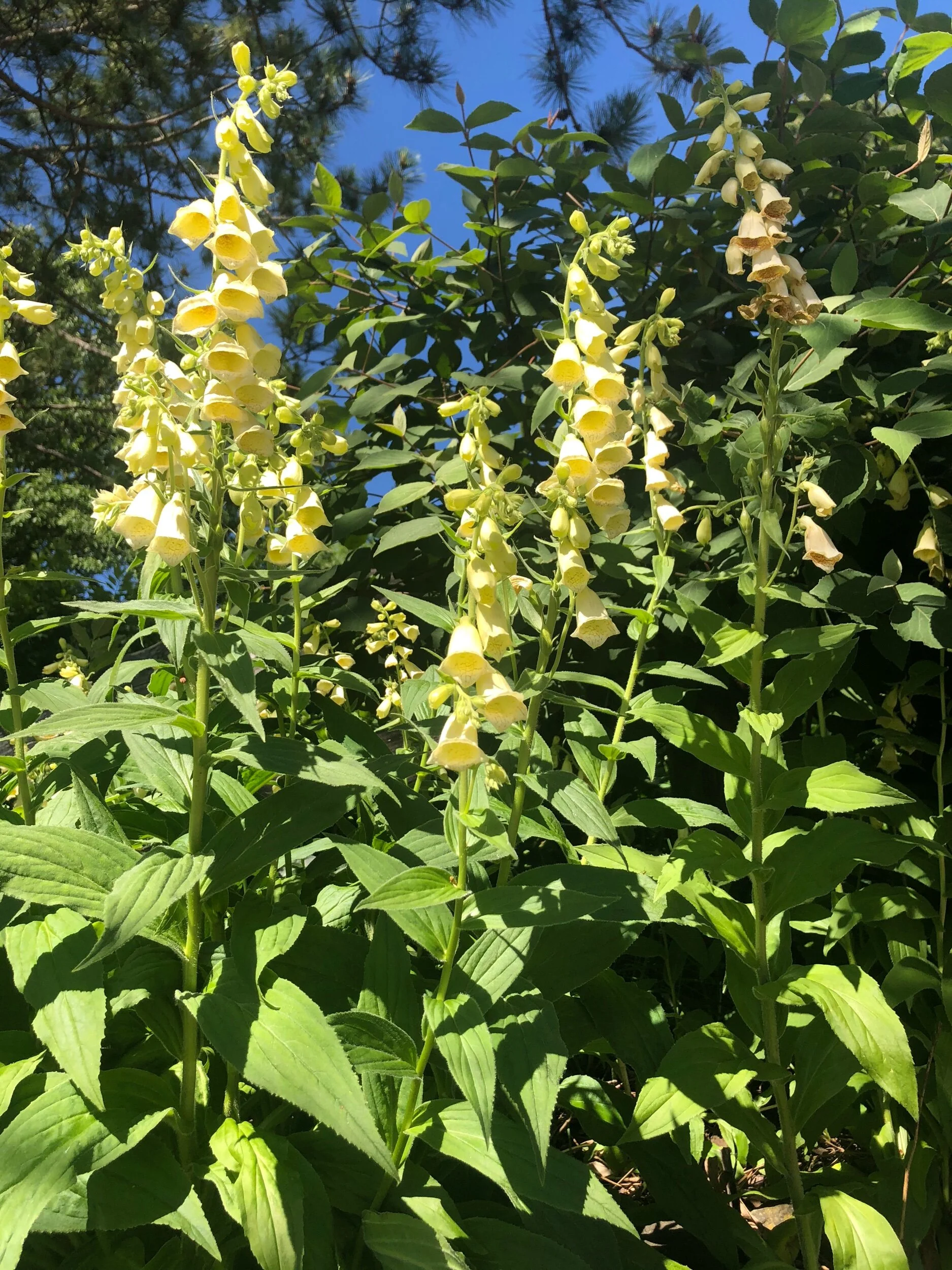
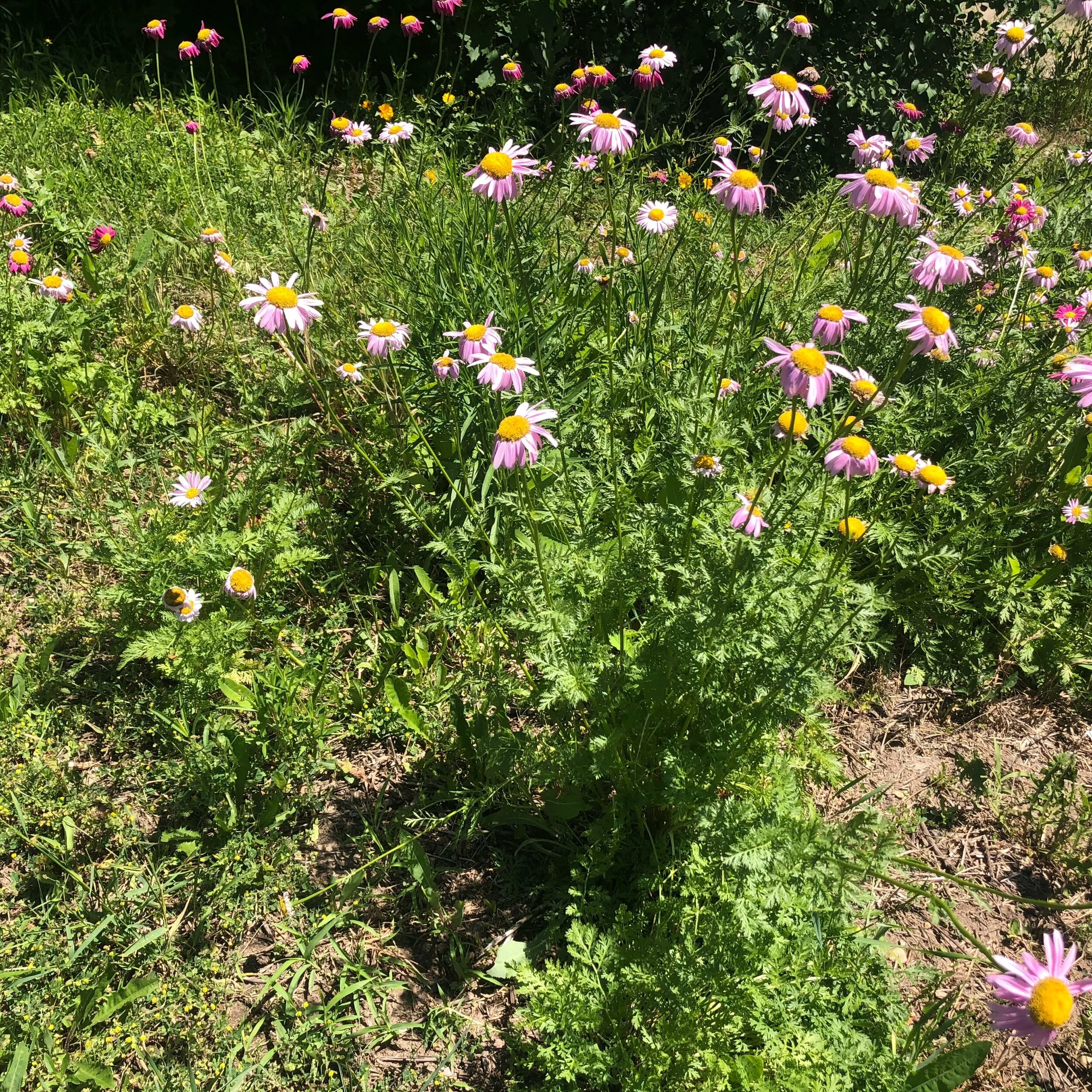
Neighbors over to the back yard, for several hour’s chat, well spaced out.
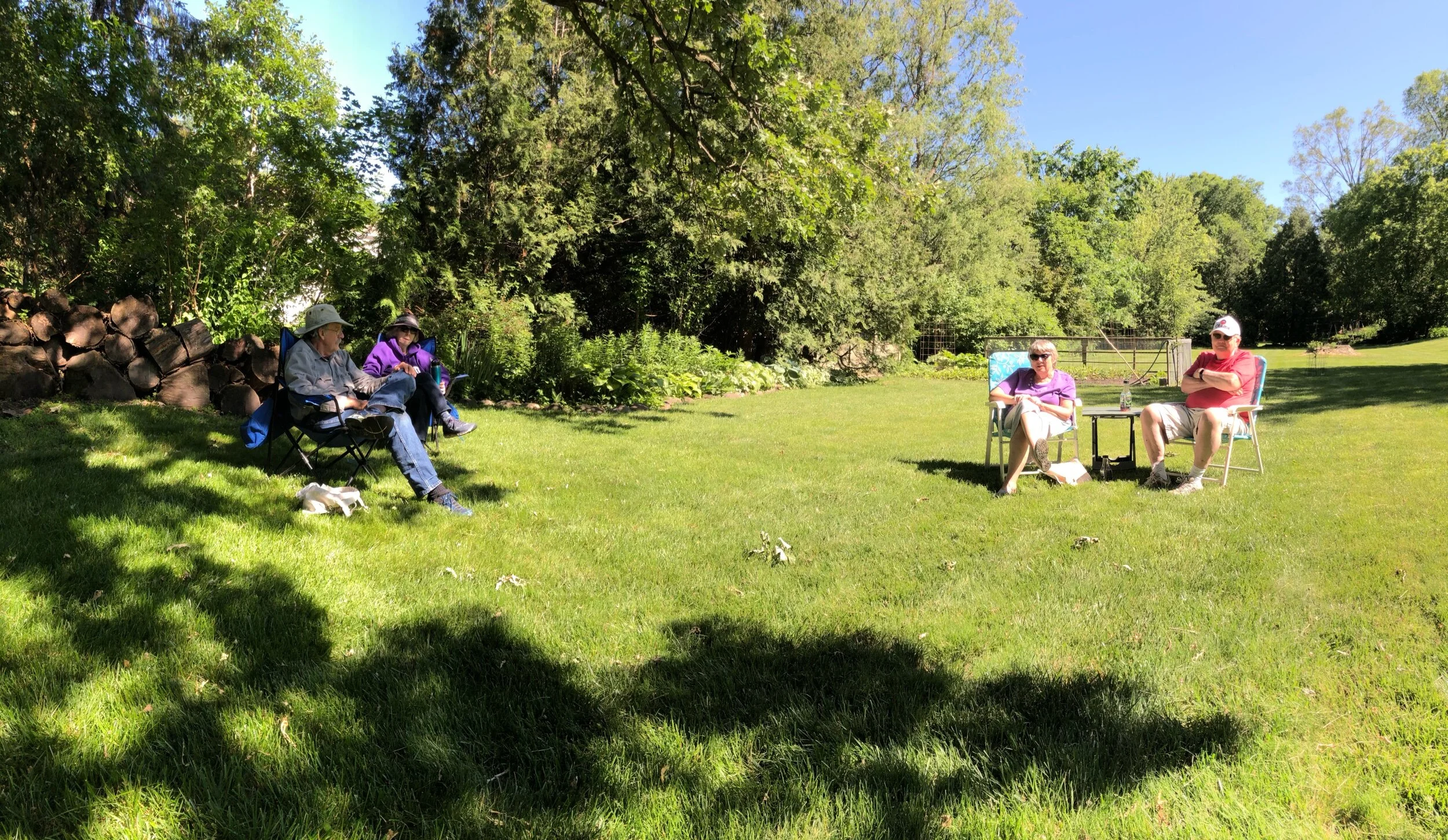
Earlier in the day a long, rambling walk through the deserted campus. It’s a beautiful place to have all to yourself.
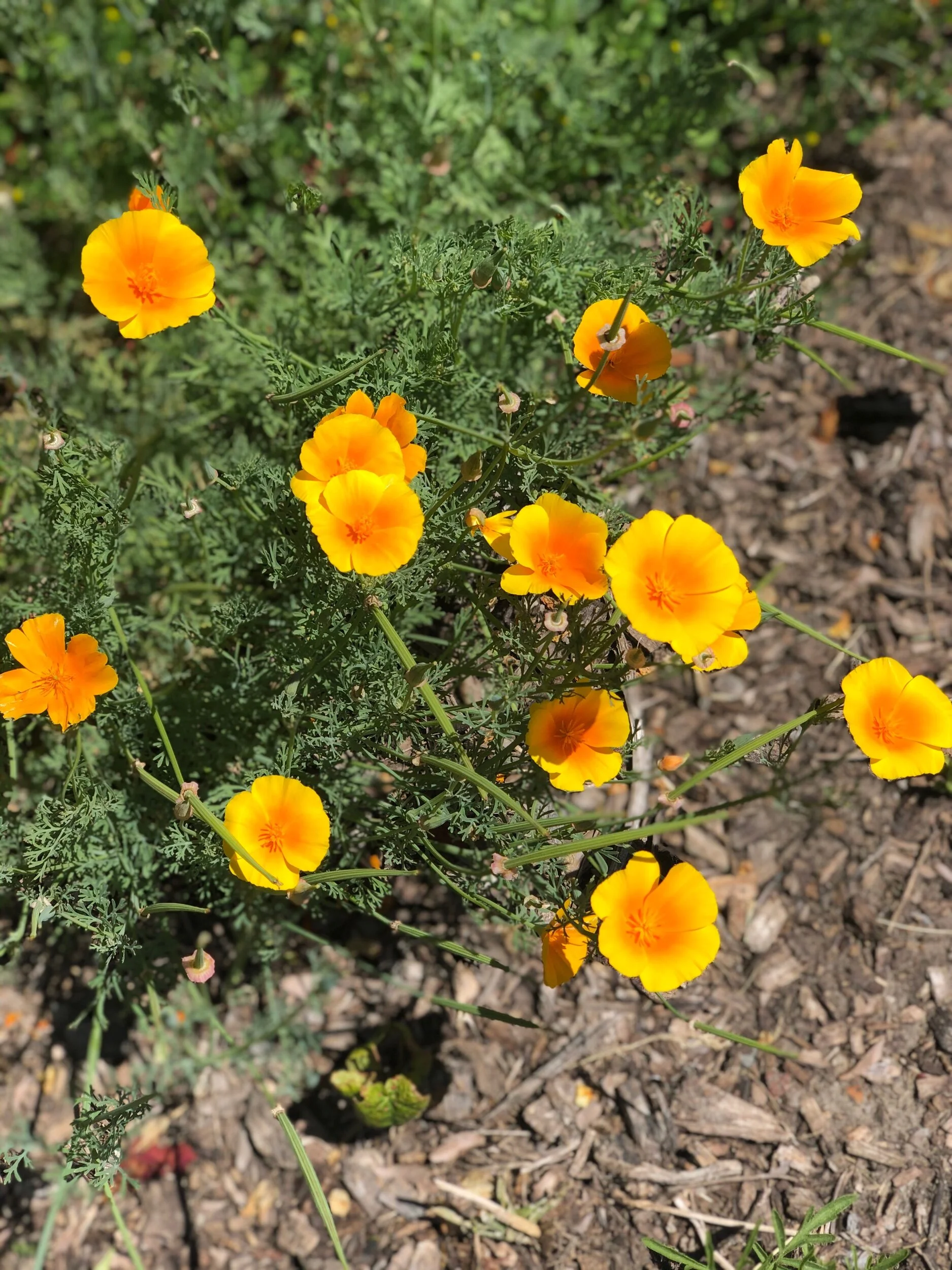
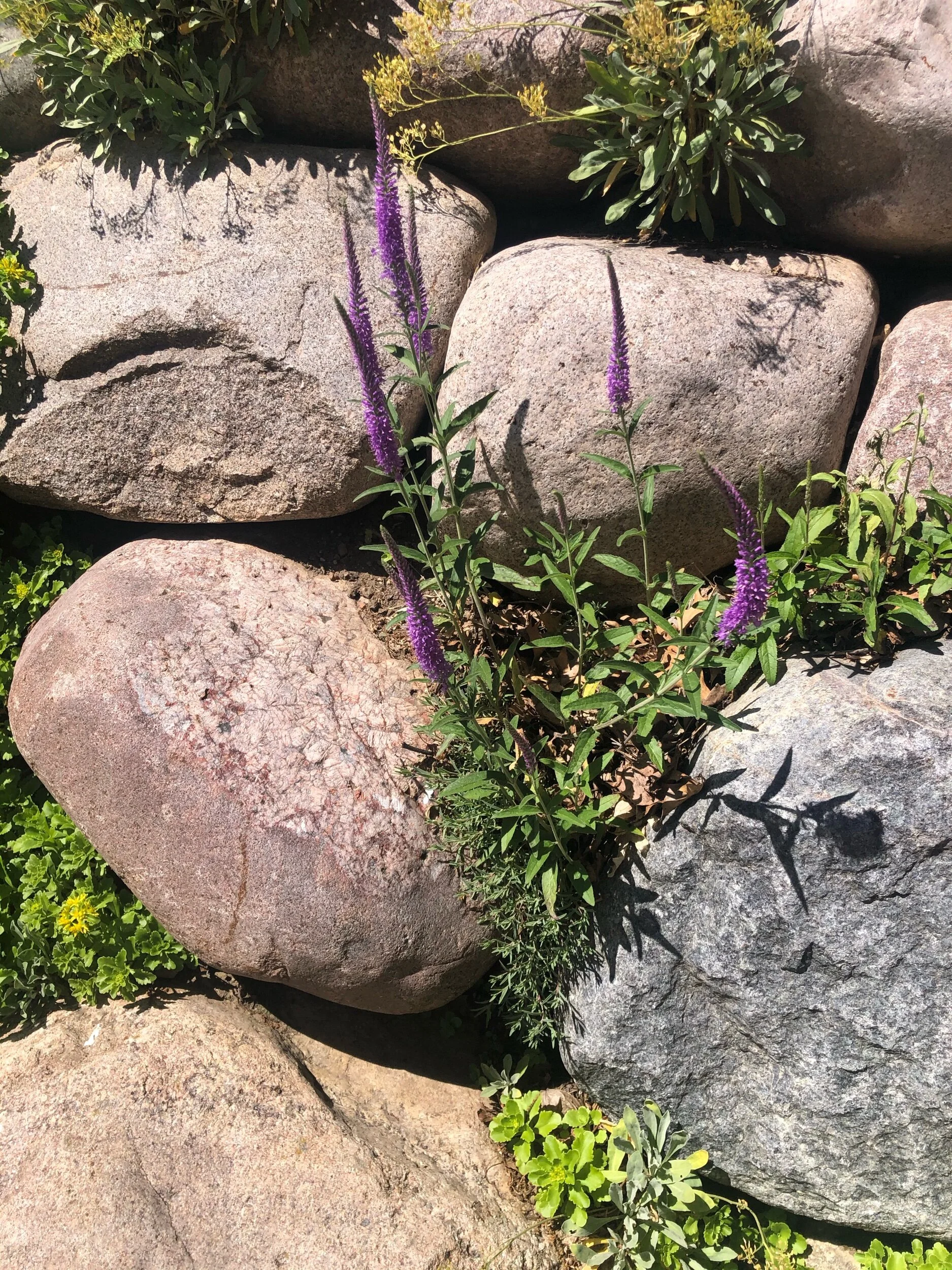
Definitely old growth.
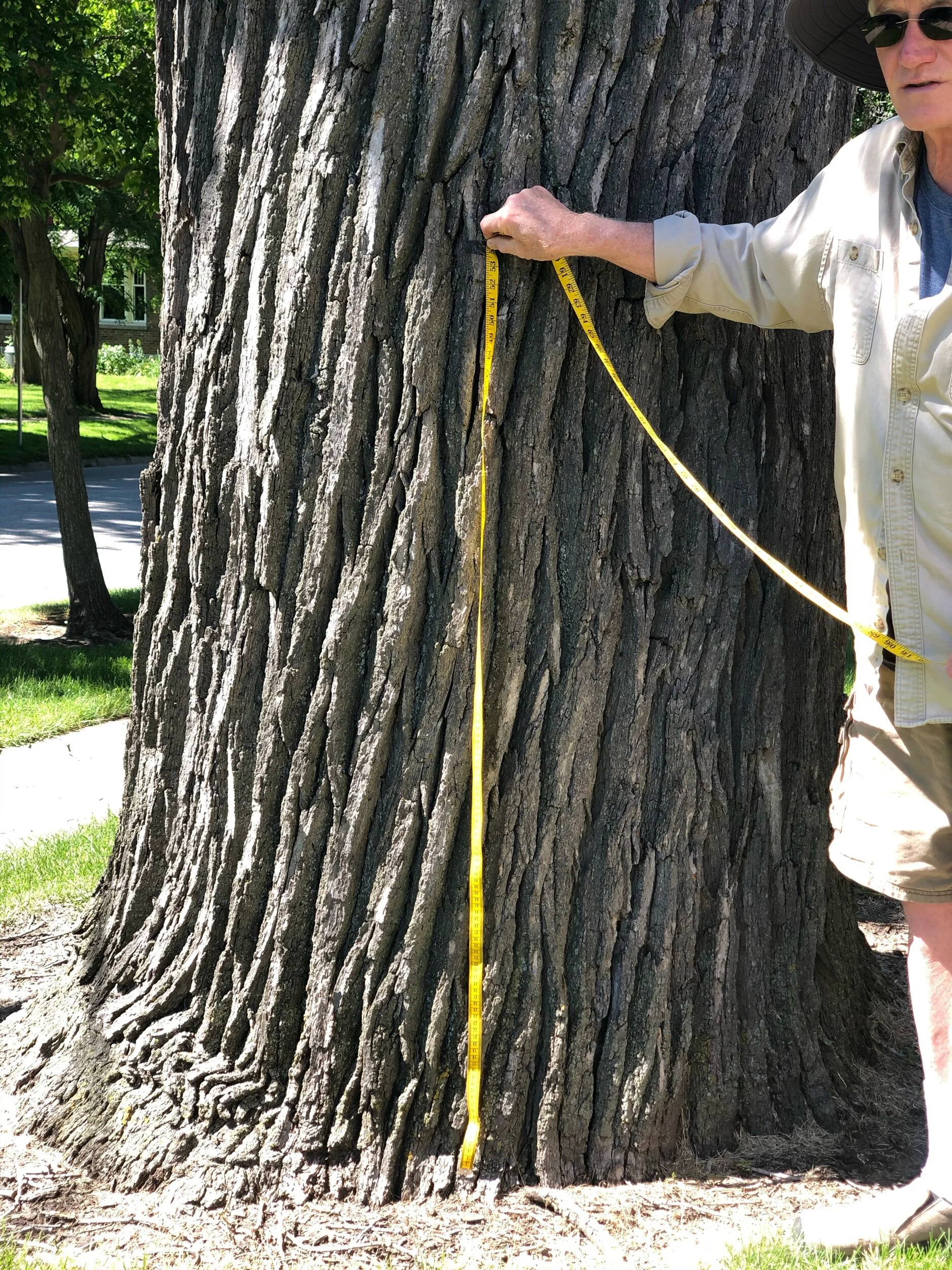
First, measure up four-and-a-half feet, which is where you measure DBH (Diameter at Breast Height).
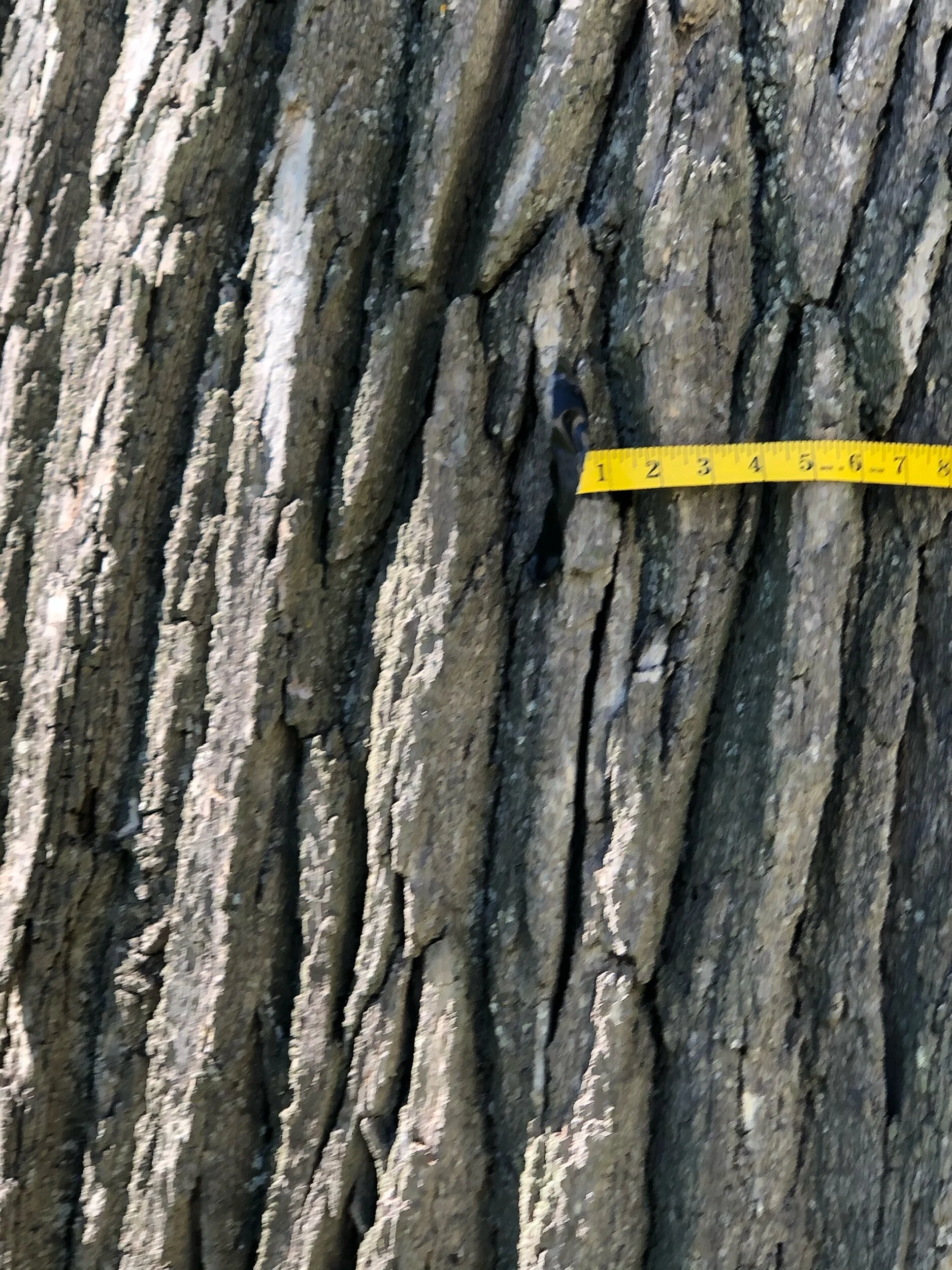
Mark it with a piece of tape, and then start measuring.
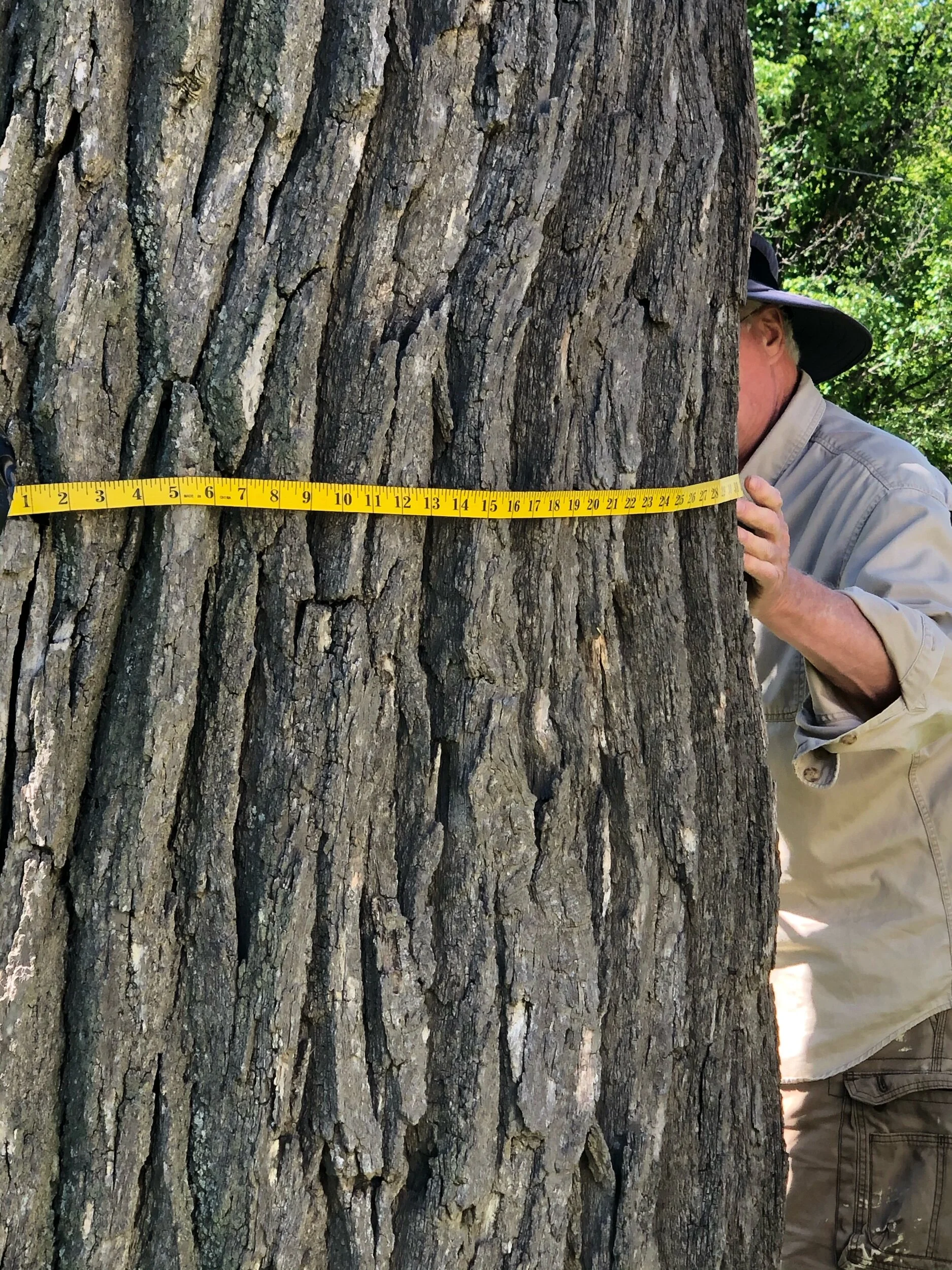
Keep measuring.
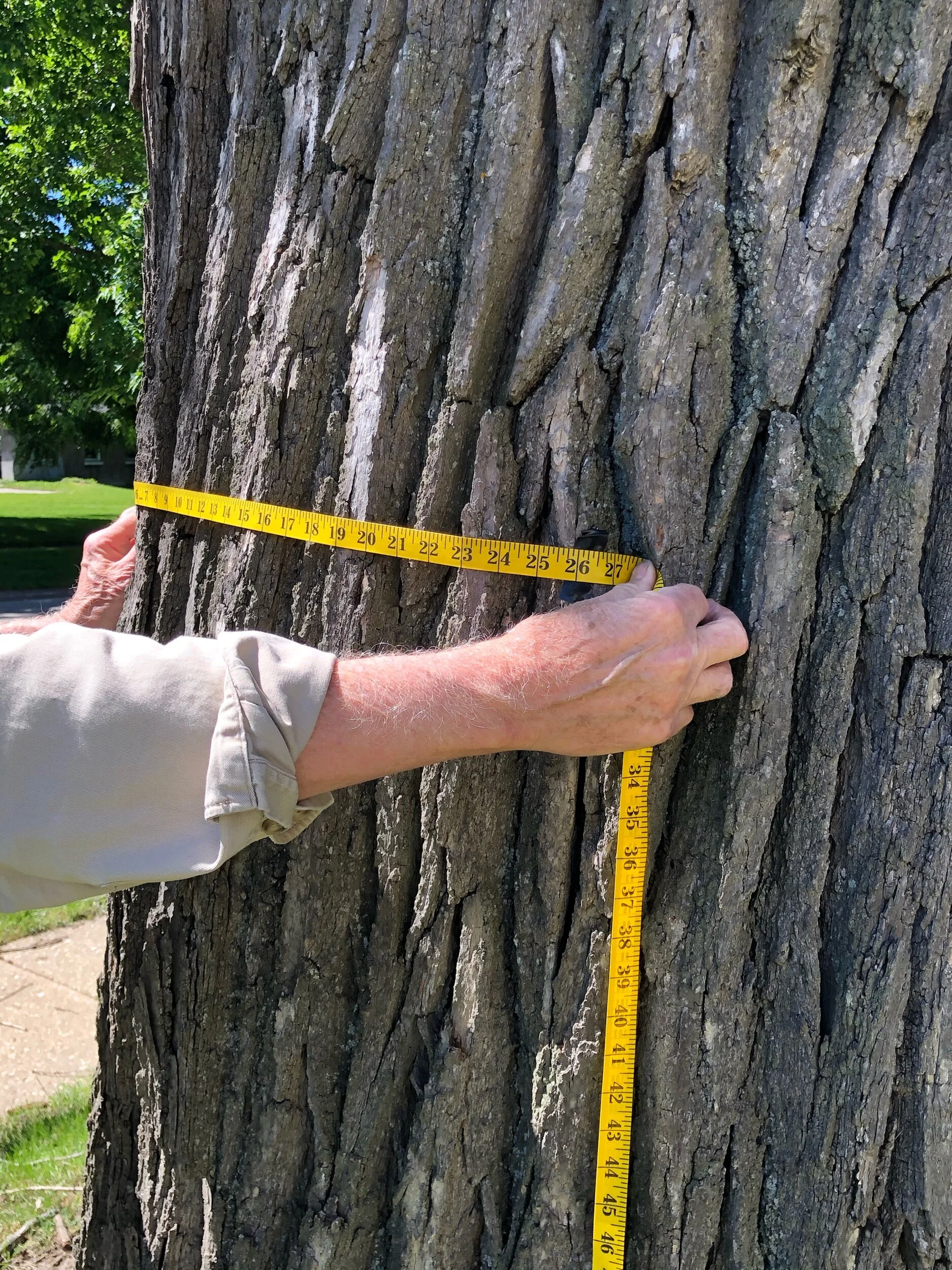
When you run out of measuring tape (in this case at 120 inches, or 10 feet), mark the spot. Then measure from that point to your starting point.
In this case we had 120 inches, plus 26 inches, which when added together equals 146 inches, which is almost 12 feet. That’s the circumference. Now, to find the diameter we divide by Pi. So, 146/3.14= 46.5 inches, which I am rounding up to 47 inches. That’s the diameter.
Now, to estimate the age of the tree, you need to know what kind of tree you are measuring and then use some kind of Growth Factor chart. See the previous post. (You can download a Step-By-Step Guide, which includes several charts.)
This tree I know as an old friend and as a burr oak. And, when I look at the charts, it appears to be off the chart. More than 152 years then, and probably in the 160 to 180 range. This tree, it would appear, was seedling sometime before the civil war, sometime before Wisconsin became a state, and back when Wiitewater was a campsite.
Yes, it’s possible.
Perfect day for a ride. On the Glacial Drumlin Trail. This time from Sullivan to Jefferson, just over 10 miles. Sue was kind enough to drop me off at the start point and pick me up at the end point. And while I was riding, she and Pax walked, hung out in a park, and read books.
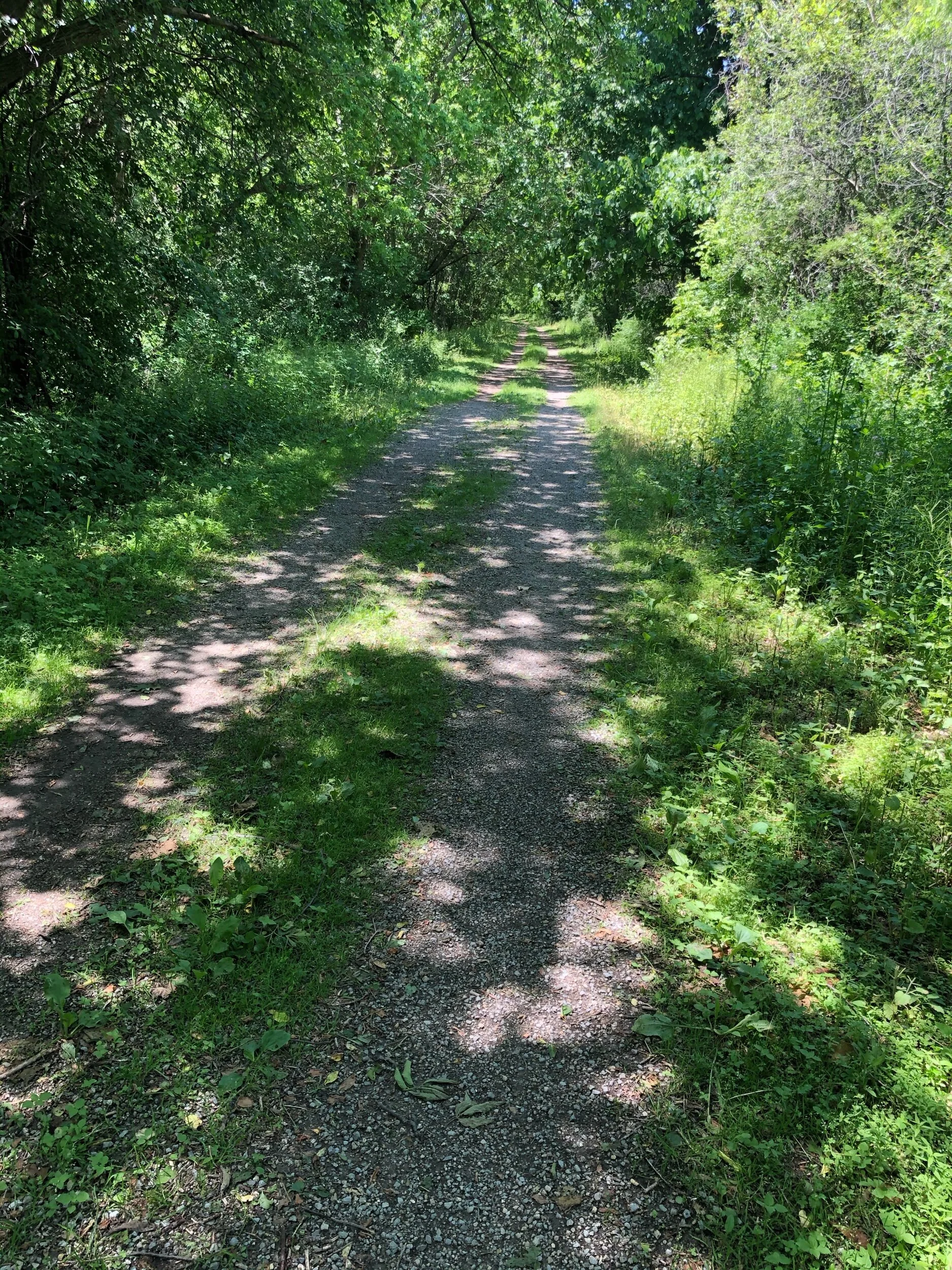

Mostly a tunnel of trees, an arching canopy, sometimes low enough to give a thwack on the helmet or require a quick duck of the head. Old RR right of way, sometimes elevated, sometimes sunken like the Natchez trace. All gravel or compacted dirt. A feeling of wild, although never very far from a highway. Just over 10 miles, with an average speed of 14 mph, and a fun factor of 9.8. A covid adventure par excellence.
Near-gale-force westerly. And in that breeze low humidity and a comfortable temperature.

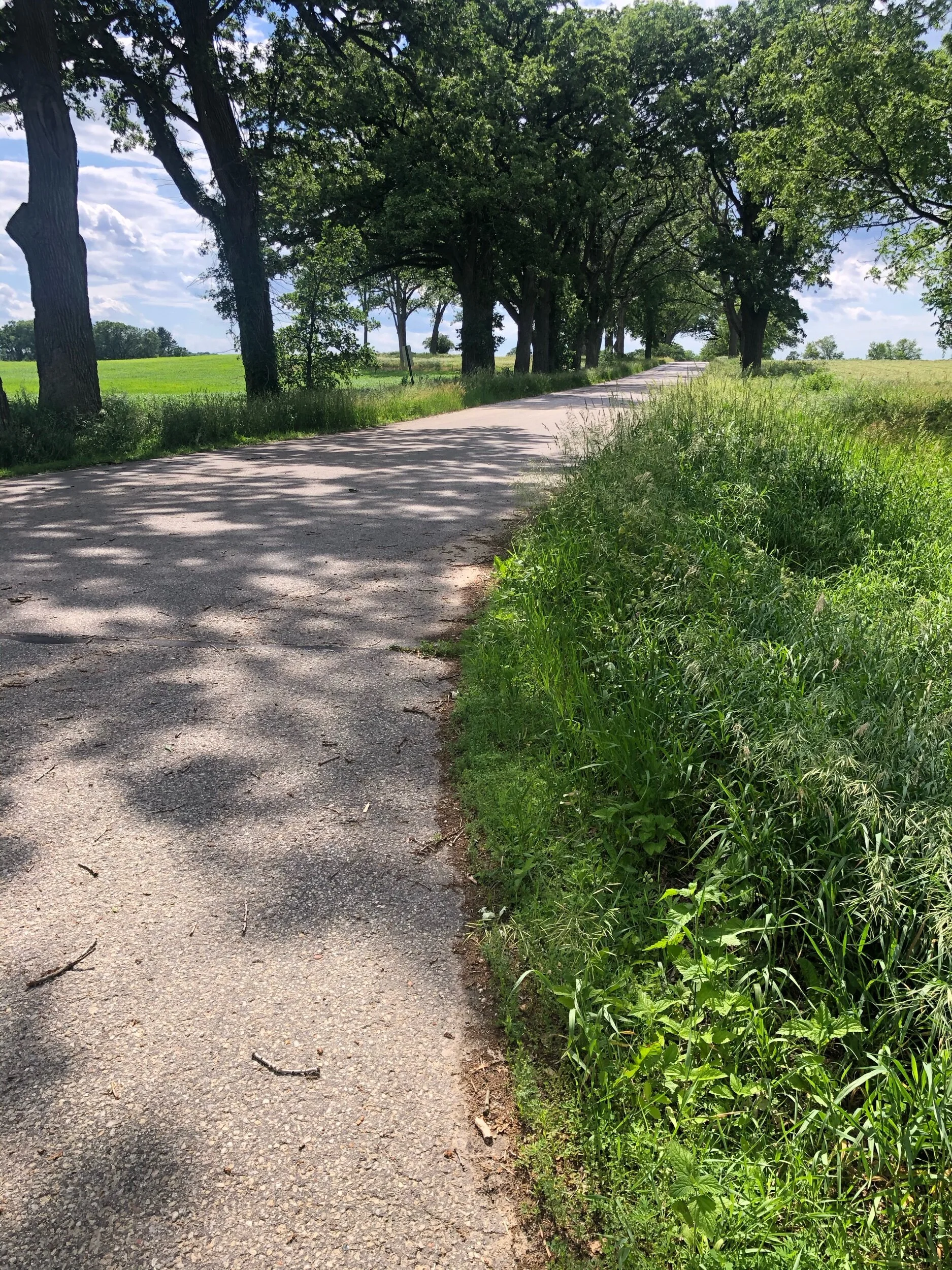
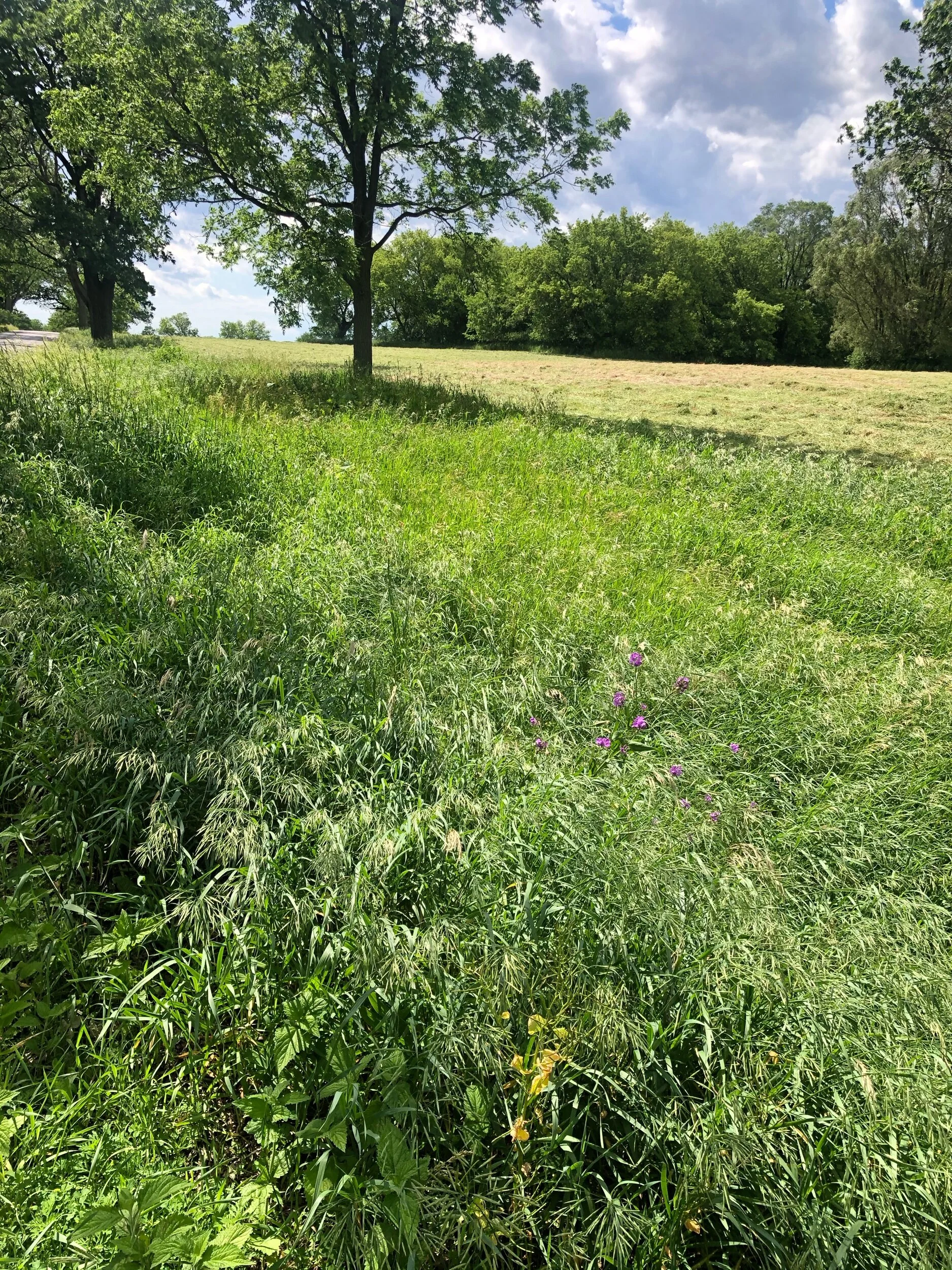
Perfect for an electrically assisted 13-mile bike ride into the countryside.
Sue-made rhubarb crisp for desert tonight.
…causing overflow. In between storms, gelatinous globs of late season pear leaves mixed with recent, though mushy, maple samaras were removed, and then the gutters ran clear. After the first storm, conditions remained tropical, but late in the afternoon a lovely cold front blew through, and now—windows wide open, and a little light rain being swirled around by a vigorous north-west wind.

…giving us a much needed soaking.

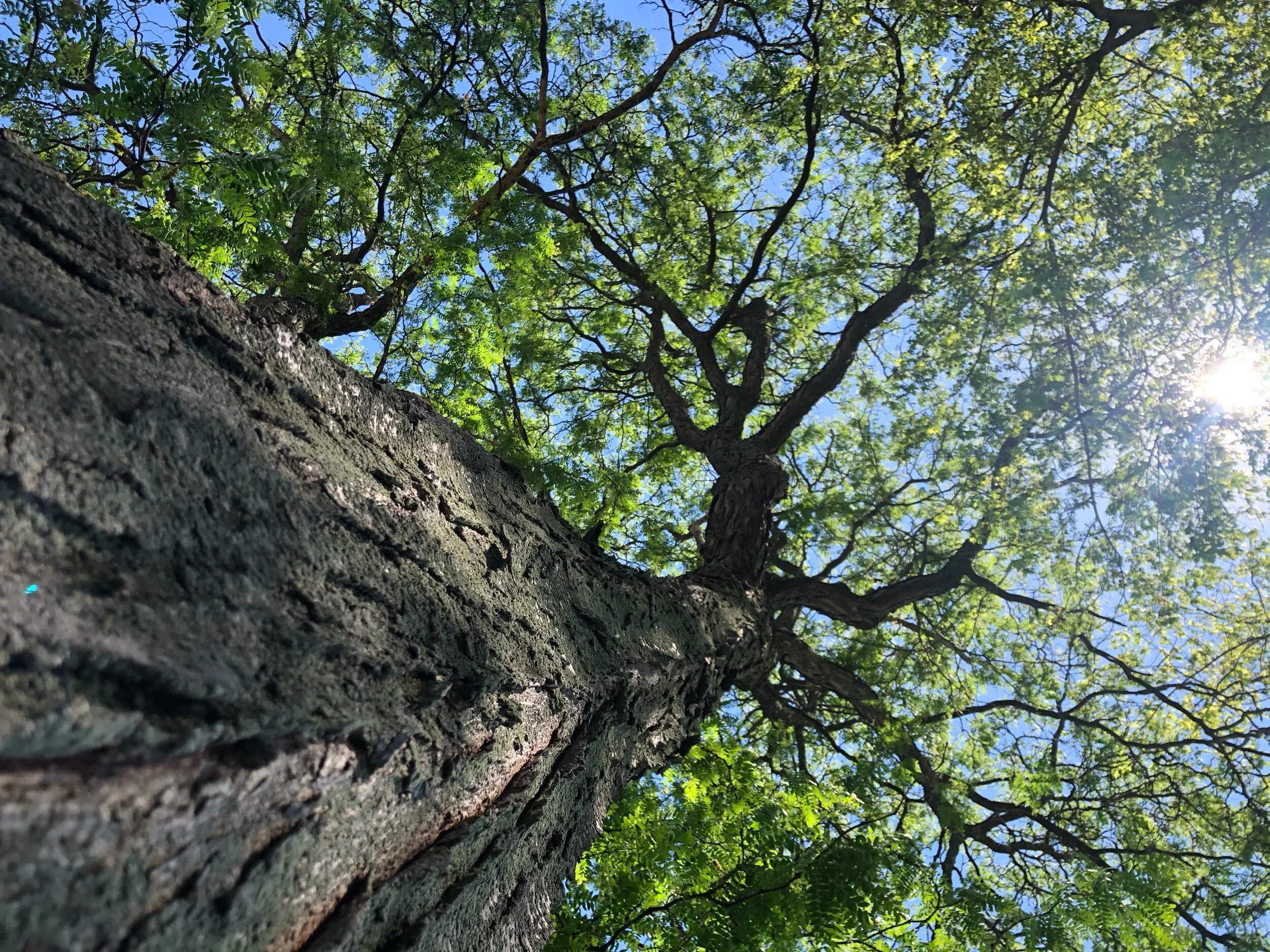
Prior to the rain event
Hot and dry before Cristobal’s arrival, but a walk with Pax and a bike ride were worked in somehow.
…as well as, how to beet, chard and radish.


Also, how to hosta (although there’s not much how to when it comes to hosta). (They just make for nice photos. )
The best way to do it, at least around here at this time of year, is between 6 and 7 a.m. before the sun overtops the wall of trees to the east. It’s quite nice. Still pleasantly cool. Not too many, bugs (surprisingly). Gentle breezes. Lingering birdsong.
Enjoyable to shuffle along on either side of a row of beets, reaching down now and then, to pull a galinsoga, purslane, or bindweed. And done daily, it’s not at all a chore.
First, of course, a few drips from the coffee cup by way of offering and thanksgiving for all the growing things (weeds, too, I suppose). Then the joy of whisking away, with the collinear hoe, those things with the temerity to grow in the wrong place. Then the satisfaction of deftly wielding the watering wand, giving the roots a drink but not spritzing the leaves too much.
We are experiencing a dry period here in SE Wisconsin right now, but in spite of that, growth is rampant. And, rain is in the forecast for tomorrow. Time to go pull a few radishes for tonight’s salad.
Big turnout for Whitewater protest this morning. Family picnic at the Nies residence this afternoon.
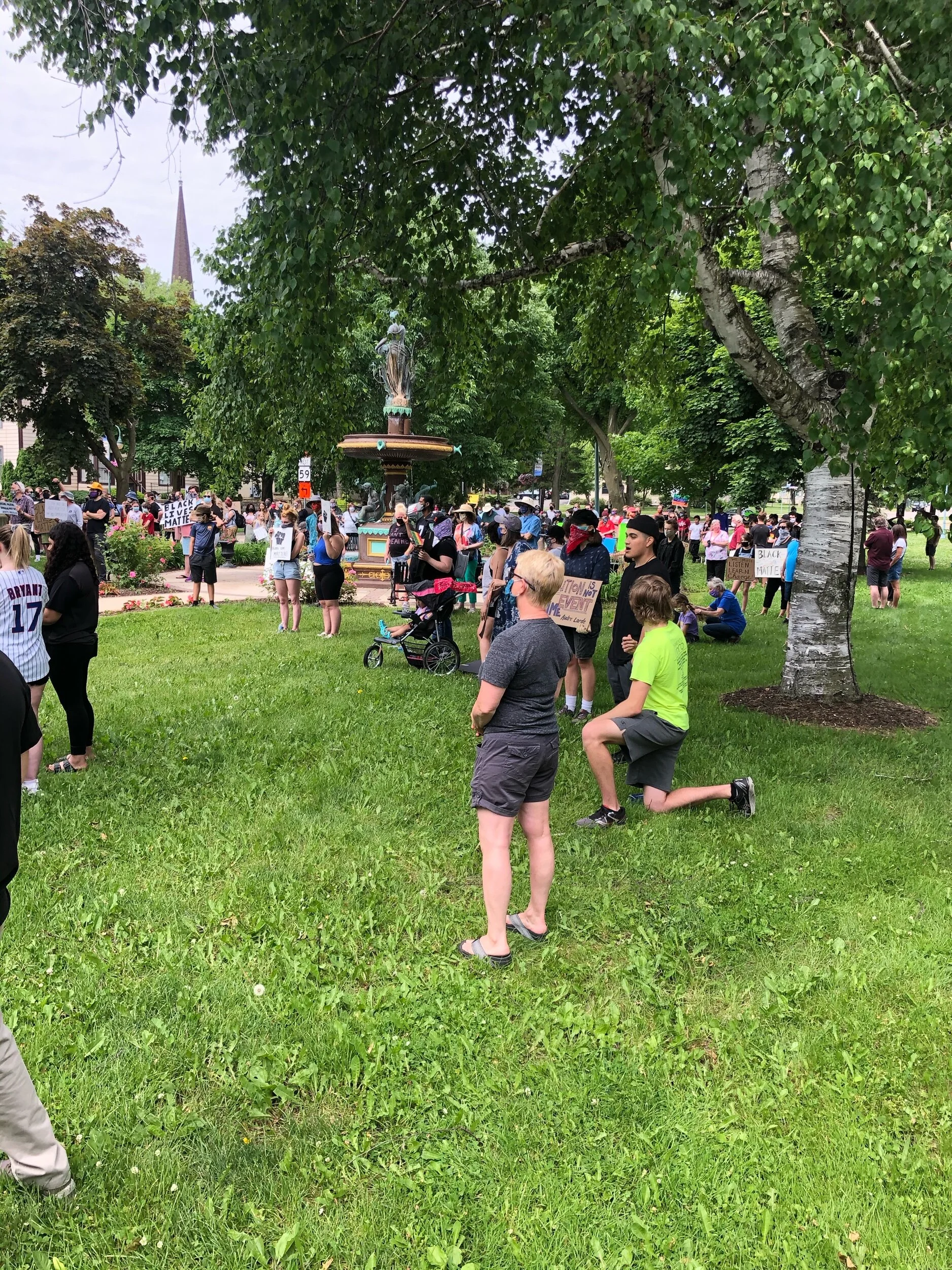
The picnic started off with an elaborate dance show. Later: croquet, a dog walk, lots of delicious food, and time playing with Lucy, the new puppy.




…chilling in the new fridge.

Unfortunately, while the recipe calls for an Italian frying pepper or or some other long, green pepper, I used two small, short green peppers, and now this lovely, chilled soup may be too hot to handle. We’ll find out tomorrow.
As for the weather, much better—light NE breeze (maybe even lake effect) so cooler and less humid. Windows open, air off.
And for garnish…

…to avoid midday sun and heat.
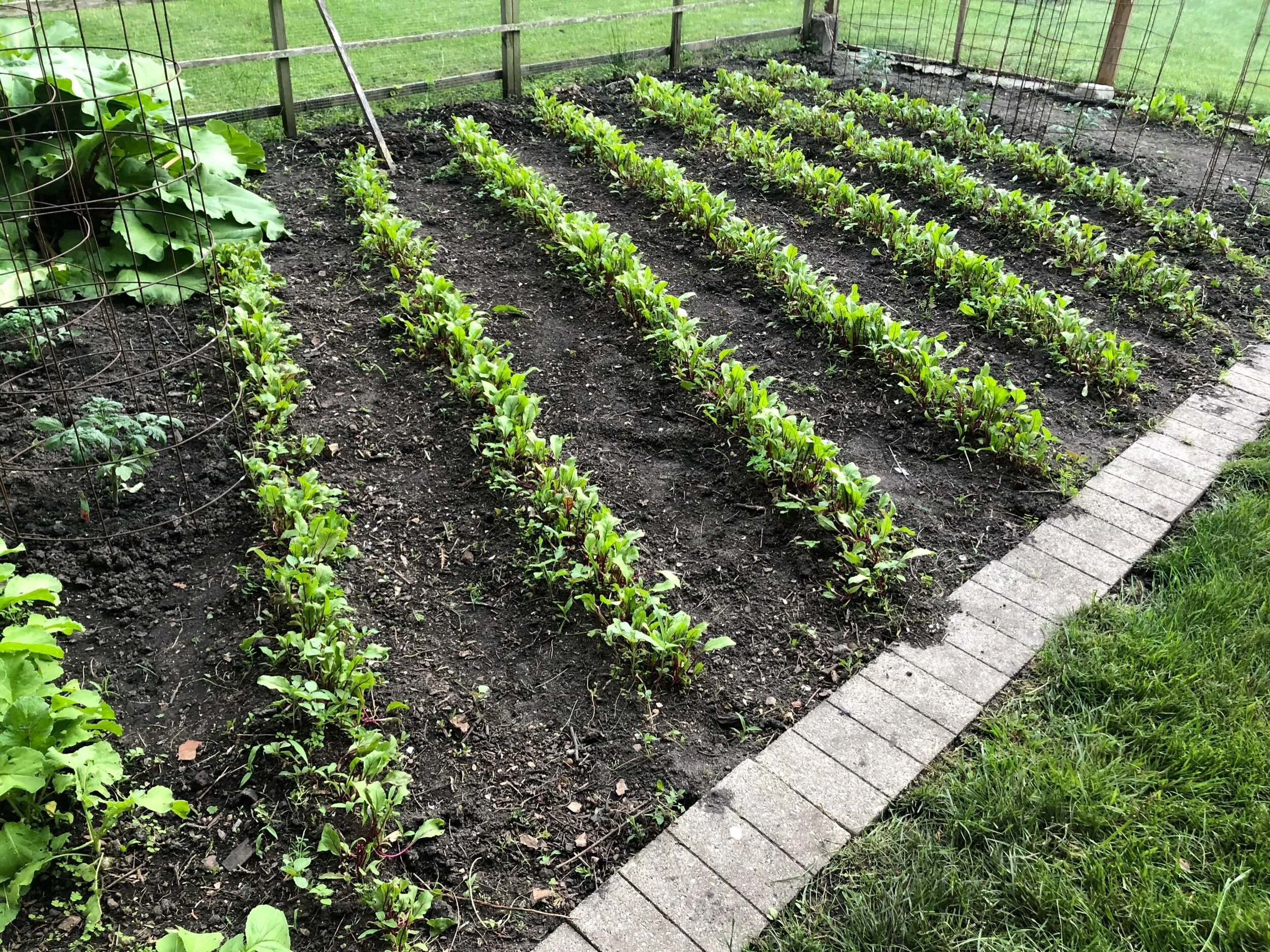
An hour every morning and the garden comes under control (after several weeks of neglect). Looks like the possibility of a good beet harvest. Also: first radishes ready, tomatoes in and enjoying the growing weather, two varieties of winter squash set to see daylight in a day or two.
It’s been many years since the Whitewater yard and garden have had this much attention, and attention is a good thing, every so often.
Garden work shortly after sunrise (to beat the heat), and other projects, but still unable to focus on much beyond the state of the nation.

It’s not just the U.S. military occupying the streets of Washington, D.C., but also a number of heavily armed and equipped “officers” with no visible identification. According to the Washington Post all insignia and nameplates are absent or have been removed, with members of this force unwilling to identify their branch of service or chain of command.
What we have here is an incognito, unaccountable black-ops force “dominating” the streets of D.C. —controlling and threatening legitimate protesters.
Insistent investigation by a number of news organizations eventually identified this stealth force as coming from the Justice Department’s Bureau of Prisons, under the direction of William Barr.
This is absolutely terrifying—possibly the American equivalent of the Nazi SS or the Soviet KGB—in our nation’s capital.
Clearly, the Trump administration has strong totalitarian tendencies. I don’t think it far fetched to imagine that another four-year Trump/Barr term could see unidentified black-ops forces breaking into American homes and “disappearing” dissidents.
This line of reasoning brings me to a very strange place—something of an alignment with organizations like the Posse Comitatus, Sovereign Citizen movement, and other ultra right-wing militias that fear the federal government.
But of course, that’s absolutely wrong. The most likely scenario in a totalitarian takeover is that these paramilitary organizations become enlisted in the effort; after all, they share the same fundamentalist, anti-democratic, authoritarian, white supremacist motivations. Just like the SS.
No, the best way for me to deal with my fear of a police state is to work to make sure that Trump (and his gang of thugs) is removed from office.

Cities that have sound and restrictive “Use of Force” policies have far fewer police-caused civilian deaths.
Which of the following would be LEAST USEFUL in a “Use of Force” policy?
☐ De-escalation requirement (and training on the process)
☐ At-the-ready crisis intervention team
☐ Requirement for verbal warnings
☐ Prohibition on choke holds
☐ Prohibition on shooting at moving vehicles
☐ Prohibition on military gear and equipment
☐ Sensitivity training
☐ Strict diet and exercise requirements
☐ Requirement that other officers intervene to prevent excessive use of force
☐ Immediate, independent criminal investigation of every incident
Meeting with Bri at Dousman (alongside the Glacial Drumlin Trail) for a JJ Sandwich and chat (one half hour), and then some trail biking (one half hour). Business power lunch?


The grand prairie hickory
Stats on ride part: Duration-29 minutes, Distance-7.5 miles, Average speed-15 mph, Top speed-25.5 mph.
And it was hot—over 90.
Later, Pax and I went for a hot walk in the prairie.
… existence or expect resistance.
…on a very windy day.
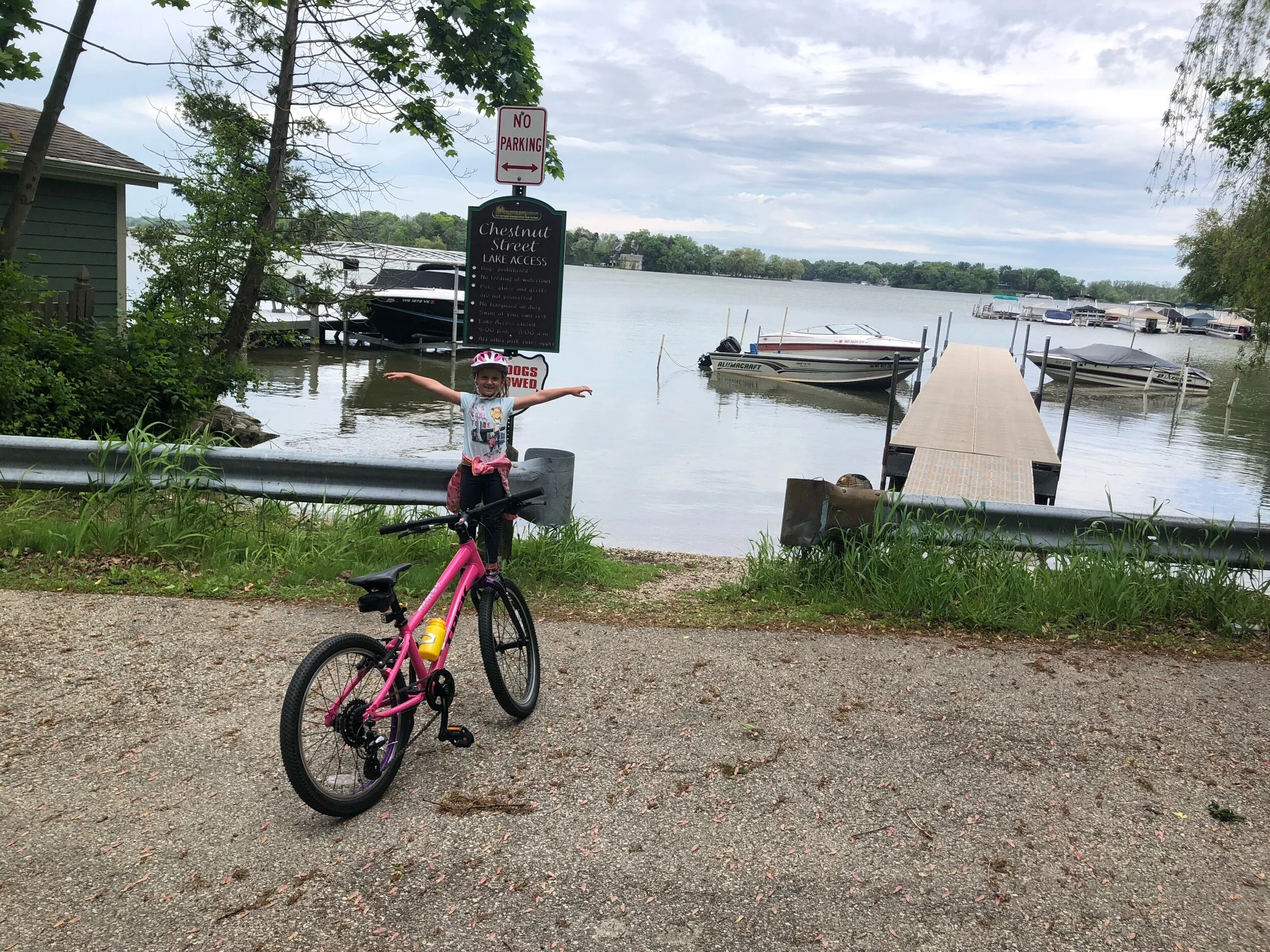


Quite a ride. Thanks for riding with me Bec.